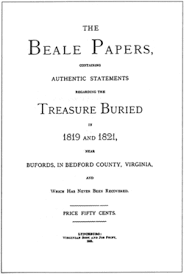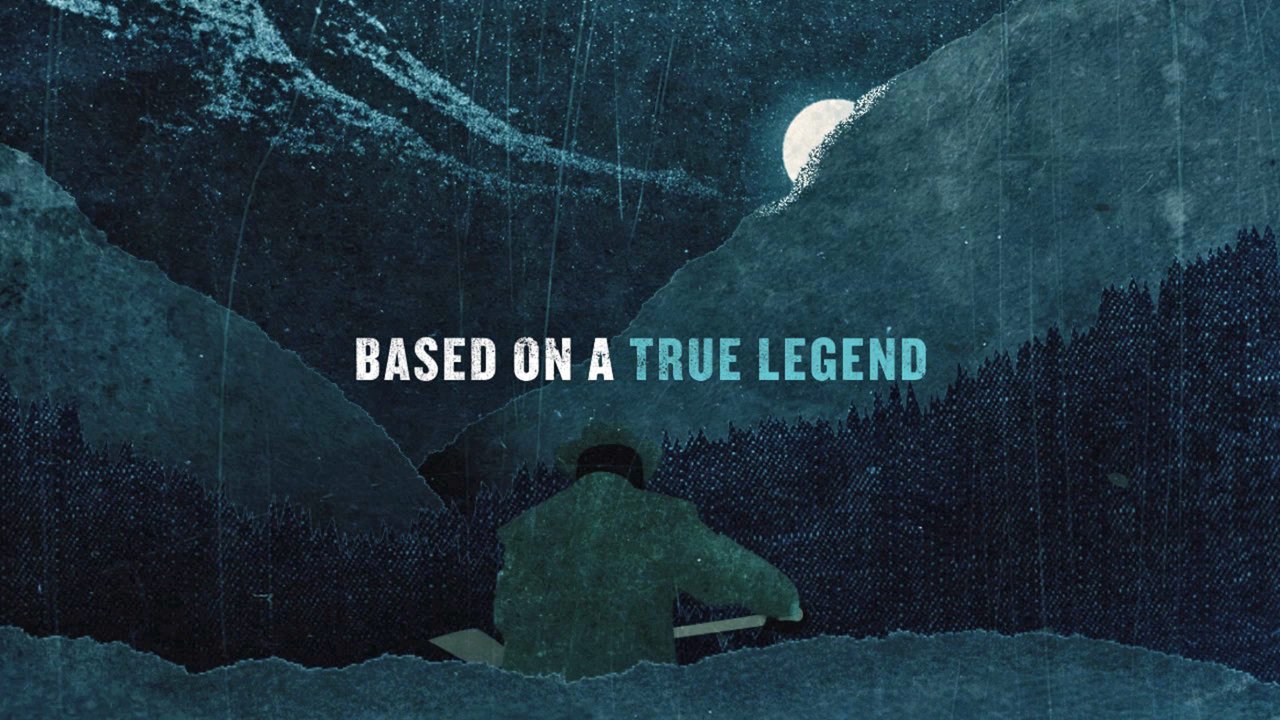
|
|||
The Beale Treasure Ciphers - Modern Take on an Old Mystery
Source : http://en.wikipedia.org/wiki/Beale_ciphers
The Beale Ciphers are a set of three ciphertexts that supposedly reveal the location of one of the grandest buried treasures in U.S. history: thousands of pounds of gold, silver and jewels. The treasure was originally obtained by a mysterious man named Thomas Jefferson Beale in 1818 while prospecting in Colorado. Of the three ciphertexts, only the second one has been cracked. Interestingly, the U.S. Declaration of Independence turned out to be the key — a curious fact given that Beale shares his name with the author of the Declaration of Independence. The cracked text does reveal the county where the treasure was buried: Bedford County, Va., but its exact location is likely encrypted in one of the other uncracked ciphers. To this day, treasure hunters scour the Bedford County hillsides digging (often illegally) for the loot. The Beale ciphers are a set of three ciphertexts, one of which allegedly states the location of a buried treasure of gold, silver and jewels estimated to be worth over USD$63 million as of September 2011. The other two ciphertexts allegedly describe the content of the treasure, and list the names of the treasure's owners' next of kin, respectively. The story of the three ciphertexts originates from an 1885 pamphlet detailing treasure being buried by a man named Thomas Jefferson Beale in a secret location in Bedford County, Virginia, in 1820. Beale entrusted the box containing the encrypted messages with a local innkeeper named Robert Morriss and then disappeared, never to be seen again. The innkeeper gave the three encrypted ciphertexts to a friend before he died. The friend then spent the next twenty years of his life trying to decode the messages, and was able to solve only one of them which gave details of the treasure buried and the general location of the treasure. He published all three ciphertexts in a pamphlet, although most of the originals were destroyed in a warehouse fire.  However, in 1982 Joe Nickell published a scholarly analysis of the papers, using historical records that cast doubt on the existence of "Beale", and linguistic evidence demonstrating that the documents could not have been written at the time alleged (words like "stampeding", for instance, are of later vintage). His analysis of the writing style showed that "Beale" was almost certainly James B. Ward, whose 1885 pamphlet brought the Beale papers to light. Nickell argues that the tale is thus a work of fiction; specifically, a "secret vault" allegory of the Freemasons. James B. Ward was, in fact, a Mason himself. Since the publication of the pamphlet, a number of attempts have been made to decode the two remaining ciphertexts and to locate the treasure, but all efforts have resulted in failure. The treasure was said to have been obtained by an American man named Thomas Beale in 1816, to the north of Santa Fe, New Mexico, most likely in what would now be Colorado. Beale supposedly led about 29 adventurers on the discovery, but no solid proof of Beale's existence, or that of any of his companions, has yet been found in any public or private record. Beale allegedly placed the cipher texts in an iron box, and left it with a reliable person in 1822, a Lynchburg innkeeper, Robert Morriss. The treasure was supposed to be buried near Montvale in Bedford County, Virginia. Beale asked Morriss not to open the box, unless he or one of his men failed to return from their journey within 10 years. Beale promised a friend in St. Louis would mail Morriss the key to the cryptograms, but it never arrived. In 1845 Morriss opened the box and unsuccessfully attempted to solve the ciphers. Decades later he left the box and contents to a friend. Using an edition of the United States Declaration of Independence as the key for a modified book cipher, the friend successfully deciphered the second cipher text, which gave descriptions of the buried treasure. The friend ultimately made the letters and cipher texts public, apparently by James B Ward, in an 1885 pamphlet titled The Beale Papers. Ward is thus not 'the friend'. Ward himself is almost untraceable in local records except that a man with that name owned the home in which a Sarah Morriss, identified as the consort of Robert Morriss, died in at 77 (Lynchburg Virginian newspaper, May 21, 1865). He also is recorded as becoming a Master Mason in 1863. There was no explanation of the accident which led to the solution of the second ciphertext, which perhaps suggests that there was additional information now lost.
The pamphlet's background story has several implausibilities, and is based almost entirely on circumstantial evidence and hearsay. Later cryptographers have claimed that the two remaining ciphertexts have statistical characteristics which suggest that they are not actually encryptions of an English plaintext. Alphabetical sequences such as abfdefghiijklmmnohpp are both non-random, as indicated by Carl Hammer,and not words in English. Others have also questioned why Beale would have bothered writing three different ciphertexts (with at least two keys, if not ciphers) for what is essentially a single message in the first place, particularly if he wanted to ensure that the next of kin received their share (as it is, with the treasure described, there is no incentive to decode the third cipher). Analysis of the language used by the author of the pamphlet (the uses of punctuation, relative clauses, infinitives, conjunctives, and so on) has detected significant correlations between it and Beale's letters, including the plaintext of the second cipher, suggesting that they may have been written by the same person. The letters also contain several English words, such as "stampede" and "improvise", not otherwise recorded before the 1840s, implying composition no earlier than twenty years after their purported date; Beale's "stampeding" apparently first appears in print in 1883. Using Google book search however has found many books printed with these words in the early 1800's. For example:    The deciphered message The plaintext reads: I have deposited in the county of Bedford, about four miles from Buford's, in an excavation or vault, six feet below the surface of the ground, the following articles, belonging jointly to the parties whose names are given in number three, herewith: The first deposit consisted of ten hundred and fourteen pounds of gold, and thirty-eight hundred and twelve pounds of silver, deposited Nov. eighteen nineteen. The second was made Dec. eighteen twenty-one, and consisted of nineteen hundred and seven pounds of gold, and twelve hundred and eighty-eight of silver; also jewels, obtained in St. Louis in exchange for silver to save transportation, and valued at thirteen thousand dollars. The above is securely packed in iron pots, with iron covers. The vault is roughly lined with stone, and the vessels rest on solid stone, and are covered with others. Paper number one describes the exact locality of the vault, so that no difficulty will be had in finding it. The second cipher can be decrypted fairly easily using any copy of the United States Declaration of Independence, but some editing for spelling is necessary. To decrypt it, one finds the word corresponding to the number (e.g., the first number is 115, and the 115th word in the Declaration of Independence is "instituted"), and takes the first letter of that word (in the case of the example, "I"). Note that this method of encryption is slightly different from a standard book cipher. Beale used a version of United States Declaration of Independence different from the original. To extract the hidden message, the following 5 modifications must be applied to the original DOI text: after word 154 ('institute') and before word 157 ('laying') one word must be added (probably "a") after word 240 ('invariably') and before word 246 ('design') one word must be removed after word 467 ('houses') and before word 495 ('be') ten words must be removed after word 630 ('eat') and before word 654 ('to') one word must be removed after word 677 ('foreign') and before word 819 ('valuable') one word must be removed Furthermore: The first letter of the 811th word of the modified text ('fundamentally') is always used by Beale as a 'y' The first letter of the 1005th word of the modified text ('have') is always used by Beale as an 'x' Finally, in the decoded text there are 4 errors, probably due to wrong transcription of the original paper: 84 (should be 85) 63 43 131 29 ... consistcd ('consisted') 53 (should be 54) 20 125 371 38 ... rhousand ('thousand') ... 84 (should be 85) 575 1005 150 200 ... thc ('the') ... 96 (should be 95) 405 41 600 136 ... varlt ('vault') Did Thomas J. Beale exist? A survey of U.S. Census records in 1810 shows two persons named Thomas Beale, in Connecticut and New Hampshire. However, the population schedules from the 1810 U.S. Census are completely missing for seven states, one territory, the District of Columbia, and 18 of the counties of Virginia. The 1820 U.S. Census has two persons named Thomas Beale, in Louisiana and Tennessee, and a Thomas K. Beale in Virginia, but the population schedules are completely missing for three states and one territory. Before 1850 the U.S. Census recorded the names of only the heads of households; others in the household were only counted. Beale, if he existed, may have been living in someone else's household. In addition, a man named 'Thomas Beall' appears in the customer lists of St. Louis Post Department in 1820. According to the pamphlet, Beale sent a letter from St. Louis in 1822. Additionally, a Cheyenne legend exists about gold and silver being taken from the West and buried in mountains in the East, dating from roughly 1820. Digging for treasure in Bedford County Doubts have not deterred many treasure hunters, however. The 'information' that there is buried treasure in Bedford County has stimulated many an expedition with shovels, and other implements of discovery, looking for likely spots. For more than a hundred years, people have been arrested for trespassing and unauthorized digging; some of them in groups as in the case of people from Pennsylvania in the 1990s. There is reportedly a story of a woman digging up the cemetery of Mountain View Church in February 1983, because she was convinced that Beale had hidden the treasure there. This took place at the top of Porter's Mountain exactly four miles east of Buford's Tavern. Several other digs were completed at the top of Porter's Mountain. One dig was completed in the late 80s with the land owner's permission as long as any treasure found was split 50/50. The treasure hunters only dug up Civil War artifacts. The value of these artifacts paid for time and equipment rental; these hunters broke even. The story has been the subject of at least two television documentaries (one is in the UK's Mysteries series; another is the 2011 Declaration of Independence episode of the History Channel TV show Brad Meltzer's Decoded), several books, and considerable Internet activity. Many locals who believe in the treasure think it is near Peaks of Otter, although the Peaks are over four miles from Buford's Tavern. The majority of locals believe the treasure is located at the top of Porter's Mountain located just behind Buford's Tavern. A trip to the top of Porter's Mountain from Buford's Tavern is four miles. The land owners on Porter's Mountain are fully aware of treasure hunters and permission from these owners must be obtained before any hunting can take place. comments powered by Disqus Discuss article | Article Link | More unsolved mysteries on Unexplained Mysteries |
More can be addded on request. Direct your requests at vinit@theunexplainedmysteries.com
